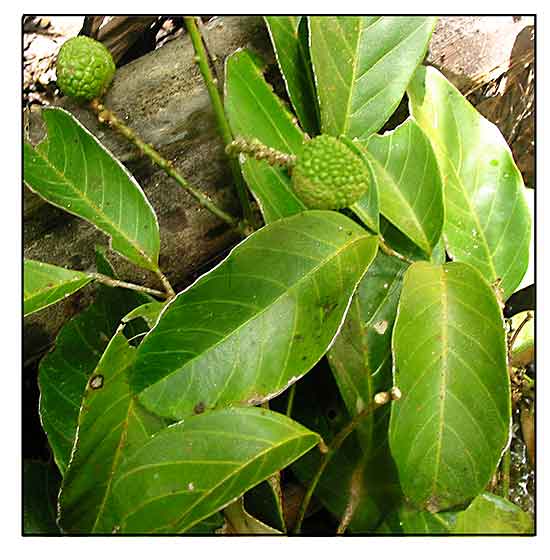
Family • Sapindaceae
Berdeng matang pusa
Dimocarpus fumatus (Blume) Leenh.
GREEN CAT'S EYE
Hui yan xiao xhao zi
| Scientific names | Common names |
| Dimocarpus fumatus (Blume) Leenh. | Berdeng matang pusa (Tagalog) |
| Nephelium fumatum Blume | Green cat's eye (Engl.) |
| Pseudonephelium fumatum (Blume) Radlk. | Green mata kucing (Engl.) |
| Accepted infraspecifics (5) | |
| Dimocarpus fumatus subsp. calcicola C.Y.Wu | |
| Dimocarpus fumatus subsp. fumatus | |
| Dimocarpus fumatus subsp. indochinensis Leenh. | |
| Dimocarpus confinis (F.C.How & C.N.Ho) H.S.Lo | |
| Euphoria bonii Gagnep. | |
| Euphoria chevalieri Gagnep. | |
| Pseudonephelium confine F.C.How & C.N.Ho | |
| Dimocarpus fumatus subsp. javensis Leenh. | |
| Pseudonephelium javanicum Radlk. | |
| Dimocarpus fumatus subsp. philippinensis Leenh. | |
| Dimocarpus fumatus (Blume) Leenh. is an accepted species. KEW: Plants of the World Online | |
| Other vernacular names |
| BORNEO: Katumbar, Mambakat, Merakiang. |
| CHINA: Hui yan xiao shao zi (D. fumatus subsp. calcicola) |
| LAOS: Lam yai pa. |
| MALAYSIA: Mambuakat (Dusun), Marakiang (Sarawak), Ribau balabau (Iban), Kekucing (Sabah). |
| MYANMAR: Taw-kyat-mauk. |
| VIETNAM: Nhan rung, Nhan dong duong. |
April 2024
![]()
 |
| PHOTOS / ILLUSTRATIONS |
| IMAGE SOURCE: Sapindaceae : Dimocarpus fumatus / Fruit / Copyright © 2011 by Leonardo L Co [ref. DOL27810] / Non-Commercial Use / Image modified / Click on image or link to go to source page / Phytoimages.siu.edu |
| OTHER IMAGE SOURCE: Sapindaceae : Dimocarpus fumatus / Fruiting twig / Copyright © 2011 by Leonardo L Co [ref. DOL27810] / Non-Commercial Use / Image modified / Click on image or link to go to source page / Phytoimages.siu.edu |
Additional
Sources and Suggested Readings |
• |
DOI: It is not uncommon for links on studies/sources to change. Copying and pasting the information on the search window or using the DOI (if available) will often redirect to the new link page. (Citing and Using a (DOI) Digital Object Identifier) |
| List of Understudied Philippine Medicinal Plants |
| New plant names needed The compilation now numbers over 1,300 medicinal plants. While I believe there are hundreds more that can be added to the collection, they are becoming more difficult to find. If you have a plant to suggest for inclusion, native or introduced, please email the info: scientific name (most helpful), local plant name (if known), any known folkloric medicinal use, and, if possible, a photo. Your help will be greatly appreciated. |
• |
 |



